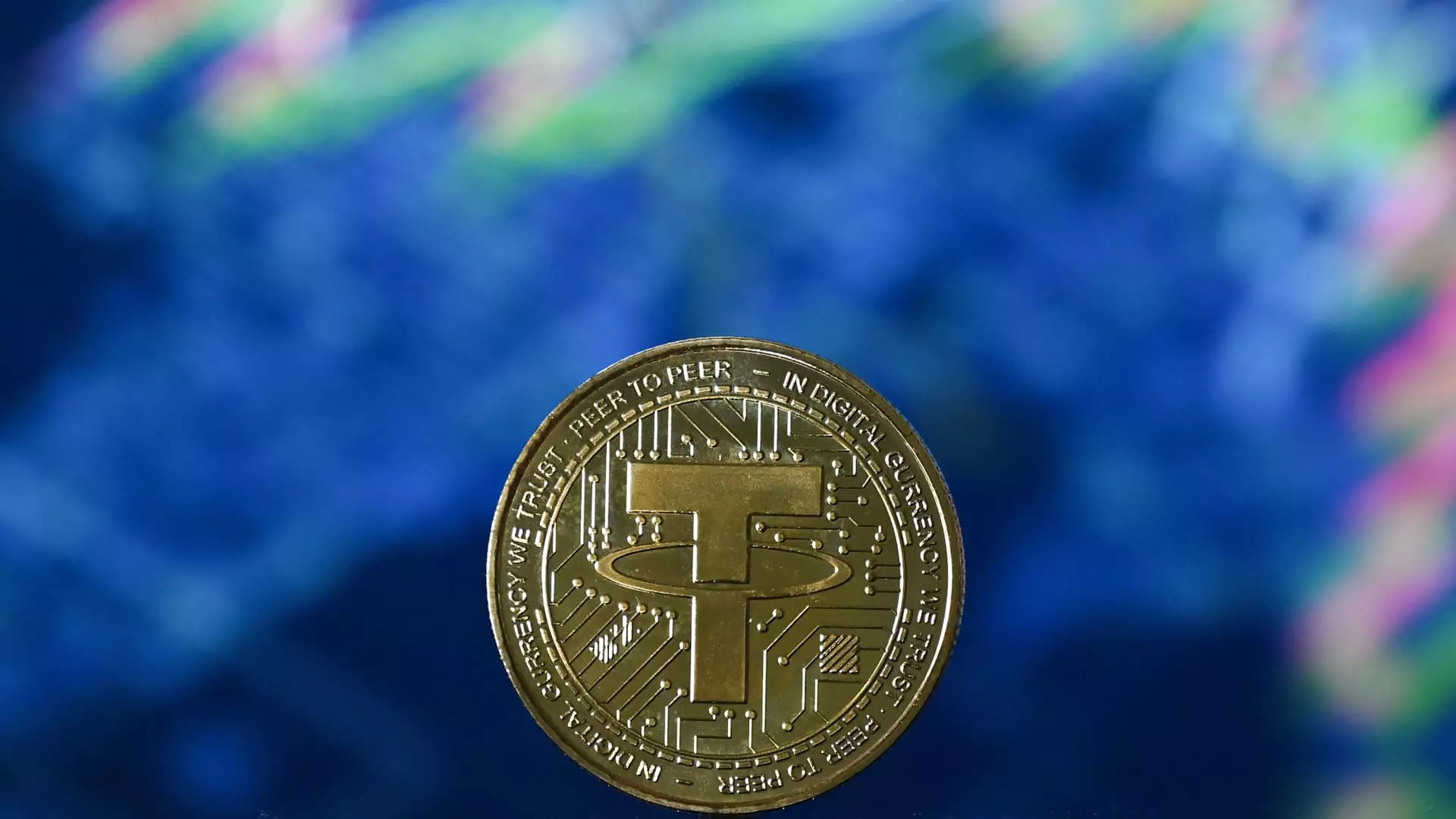The recent pronouncement by the Securities and Exchange Commission (SEC) regarding stablecoins marks a pivotal moment in the evolution of the cryptocurrency market. The SEC has clearly delineated what it sees as “covered stablecoins”—those intended to maintain a dollar-for-dollar value against the U.S. Dollar, backed by low-risk, liquid reserves. By asserting that these assets do not qualify as securities, the SEC alleviates some of the regulatory pressure hovering over an industry that has long been plagued by ambiguity. This decisive stance could accelerate the adoption and expansion of stablecoins within the broader financial ecosystem.
However, the implications of this classification extend beyond mere regulation. The fact that covered stablecoins are barred from offering interest payments to users raises pertinent questions about the sustainability and attractiveness of these digital assets. Investors, especially in an environment where yield generation is paramount, might find themselves disenchanted with a product that lacks the fundamental appeal of earning a return. If stablecoins exist solely as medium-of-exchange tools, will they lose relevance amid the landscape of alternative cryptocurrency investments that offer more lucrative opportunities?
Congress: The Key Player in the Stablecoin Debate
Congress’s active engagement in shaping stablecoin regulation cannot be understated. With two competing pieces of legislation currently on the table—namely, the Stablecoin Transparency and Accountability for a Better Ledger Economy Act (STABLE) and the Guiding and Establishing National Innovation for U.S. Stablecoins Act (GENIUS)—the stakes are extraordinarily high. These legislative proposals are not just bureaucratic measures but rather essential frameworks that will set the stage for how stablecoins interact with the traditional financial system.
President Trump’s eagerness to have stablecoin legislation on his desk by the August recess speaks volumes about the political will to accelerate the growth of this sector. The expectation is that these regulations will not only legitimize stablecoins but also encourage innovation in the field. However, the challenge lies in balancing consumer protections with the need to foster an environment where financial innovation can thrive. If lawmakers choose to restrict too severely the parameters within which stablecoins operate, they could stifle the very innovation they aim to promote.
The Yield Dilemma: A Flashpoint for Investors
One of the most contentious issues in stablecoin discourse is the ability for issuers to pay interest on these digital currencies. As Coinbase CEO Brian Armstrong has eloquently pointed out, the restrictive guidelines imposed by the SEC could undermine the utility of stablecoins. The reality is that investors are always on the lookout for yield, whether it’s through stocks, bonds, or even cryptocurrencies. By excluding consumer interest from the framework of covered stablecoins, the SEC has inadvertently boxed in a product that could otherwise appeal to a much wider audience.
Furthermore, the rise of yield-bearing stablecoins—now accounting for a notable percentage of the stablecoin universe—underscores the market’s inherent demand for returns. With the combined market cap of the top five yield-bearing stablecoins exceeding $13 billion, the pressure is on the SEC to reevaluate its stance. Ignoring this burgeoning segment could push consumers toward alternative and potentially riskier cryptocurrencies, shifting the competitive landscape of digital assets.
Market Forces and Consumer Sentiment
As the market for stablecoins grows, fueled by increasing mainstream acceptance, it’s crucial to assess consumer sentiment. Stablecoins are no longer just tools for trading or collateral in decentralized finance (DeFi); they are growing increasingly attractive to everyday users and financial institutions alike as reliable payment alternatives. This proliferation comes amid a democratizing movement in finance, where individuals seek greater control over their assets and transactions.
Financial institutions are awakening to the transformative potential of stablecoins, as evidenced by Circle’s IPO plans. Here, we see a once-niche entity moving toward becoming a household name in mainstream finance. The growing legitimacy of stablecoins as financial instruments brings with it a new set of consumer expectations. Transparency and accountability will not just be regulatory buzzwords; they will be essential elements that consumers demand from issuers.
The Path Ahead: Navigating Regulatory Waters
Looking ahead, the landscape for stablecoins appears rife with both opportunity and challenge. The SEC’s recent clarification may have provided a temporary reprieve, but it also invites scrutiny from various stakeholders within the financial ecosystem. Investors are no longer merely passive spectators; they are engaged participants armed with the demand for innovation and returns.
In navigating these turbulent waters, both regulators and industry players must remain vigilant. Future legislation will not only shape the operational framework for stablecoins but will also dictate their evolution as a cornerstone of the digital economy. Balancing risks with rewards, and innovation with regulation, will be the critical homework for all involved as they collectively chart the future of stablecoins and the cryptocurrency industry at large.

